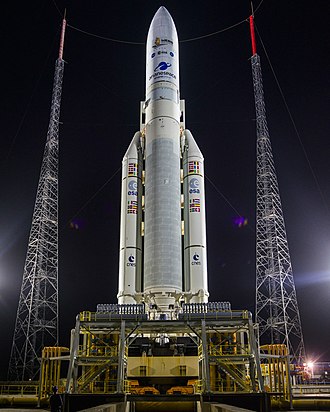
“There were two stunningly good pieces of news about the James Webb Space Telescope this weekend. One was widely reported—that after an intricate, two-week process, the telescope completed its deployment without any difficulties. The next steps toward science operations are more conventional.
The other piece of news, less well-covered but still important, emerged during a news conference on Saturday. NASA’s Mission Systems Engineer for the Webb telescope, Mike Menzel, said the agency had completed its analysis of how much “extra” fuel remained on board the telescope. Roughly speaking, Menzel said, Webb has enough propellant on board for 20 years of life.
Remarkably, NASA has completed deployment of the Webb space telescope
This is twice the conservative pre-launch estimate for Webb’s lifetime of a decade, and it largely comes down to the performance of the European Ariane 5 rocket that launched Webb on a precise trajectory on Christmas Day.
Prior to launch, the telescope was fueled with 240 liters of hydrazine fuel and dinitrogen tetroxide oxidizer. Some of this fuel was needed for course adjustments along the journey to a stable point in space, about 1.5 million km from Earth, where Webb will conduct science observations. The remainder will be used at Webb’s final orbit around the stable Lagrange point for station-keeping and to maintain its orbit.
So every kilogram of fuel saved on Webb’s journey to the Lagrange point could be used to extend its life there. Because ten years seemed like a fairly short operational period for such an expensive and capable space telescope, NASA had already been contemplating a costly and risky robotic refueling mission. But now that should not be necessary, as Webb has at least two decades of life.
A lot of this comes down to the performance of the venerable Ariane 5 rocket. NASA and the European Space Agency reached an agreement more than a decade ago by which Europe would use its reliable Ariane 5 rocket to lift the telescope into space, and in exchange, European scientists would get time to use the telescope.
During an interview with The Interplanetary Podcast, Ariane 5 program manager Rudiger Albat explained how European rocket scientists approached the Webb launch. Each Ariane 5 vehicle is interchangeable, but engineers and technicians involved in the production of the rocket know which components are going on which rocket. So when they were building a part of Webb, an engineer might say, “I’ll take a second look” to make sure the piece was the best it could be.
The Ariane 5 program also selected the best components for Webb based upon pre-flight testing. For example, for the Webb-designated rocket, the program used a main engine that had been especially precise during testing. “It was one of the best Vulcain engines that we’ve ever built,” Albat said. “It has very precise performance. It would have been criminal not to do it.””
Comment: God bless them “surrender monkeys.” pl

Quiet professionalism by ESA? Understate and over deliver? Well done making the tolerances add up for this.
It would be fun to review the telescope separation video to see if anyone snuck a ESA sticker or shipping label on the telescope. (I doubt they would though as space people are super conservative and cautious on their day jobs.)
With all the complete nonsense that passes for news these days the Webb mission has been a breath of fresh air.
Something truly exceptional.
Unlike the incompetence corruption evil that is DC and friends.
Superb!
Another reason Ariane was selected to launch JWST was the size of the fairing. Of course the Europeans contributed the launch as part of their cost share.
All in all a great outcome. Can’t wait for Webb to send back some great infra-red imagery and spectroscopy from the earliest galaxies and possibly earth-like exoplanets.
To provide more detail, I believe that the launch specification was for a JWST final velocity adjustment of up to 30 m/s, while ESA delivered under 5 m/s. So 80% fuel savings, hence doubling of the life cycle.
Also, they could do this without affecting their other customers who got the less precise components. Commercial satellites have to do velocity adjustments of 1000 – 1500 m/s to enter their orbits, so increase in accuracy of 20 m/s for them represents a few percent fuel savings, not a significant factor over satellite life time.
From an earlier article by this same Ars Technica writer:
“Building this heat shield, testing it, and ensuring it could be deployed in space required the better part of two decades.”
The engineering & then deployment of the heat shield while speeding in space is truly an impressive achievement by the JWST team.
BP,
“equired the better part of two decades”
Talk about job security……
Fred,
In this case I doubt it was “job security”, since Congress & NASA could have pulled the plug anytime.
Having a light enough heat shield that could cut heat from the sun facing side to cold as hell on the instrument side and then have it folded and unfurled in space to size of a tennis court was super challenging. Couple years got added to the schedule as the heat shield tore during ground-based tests.